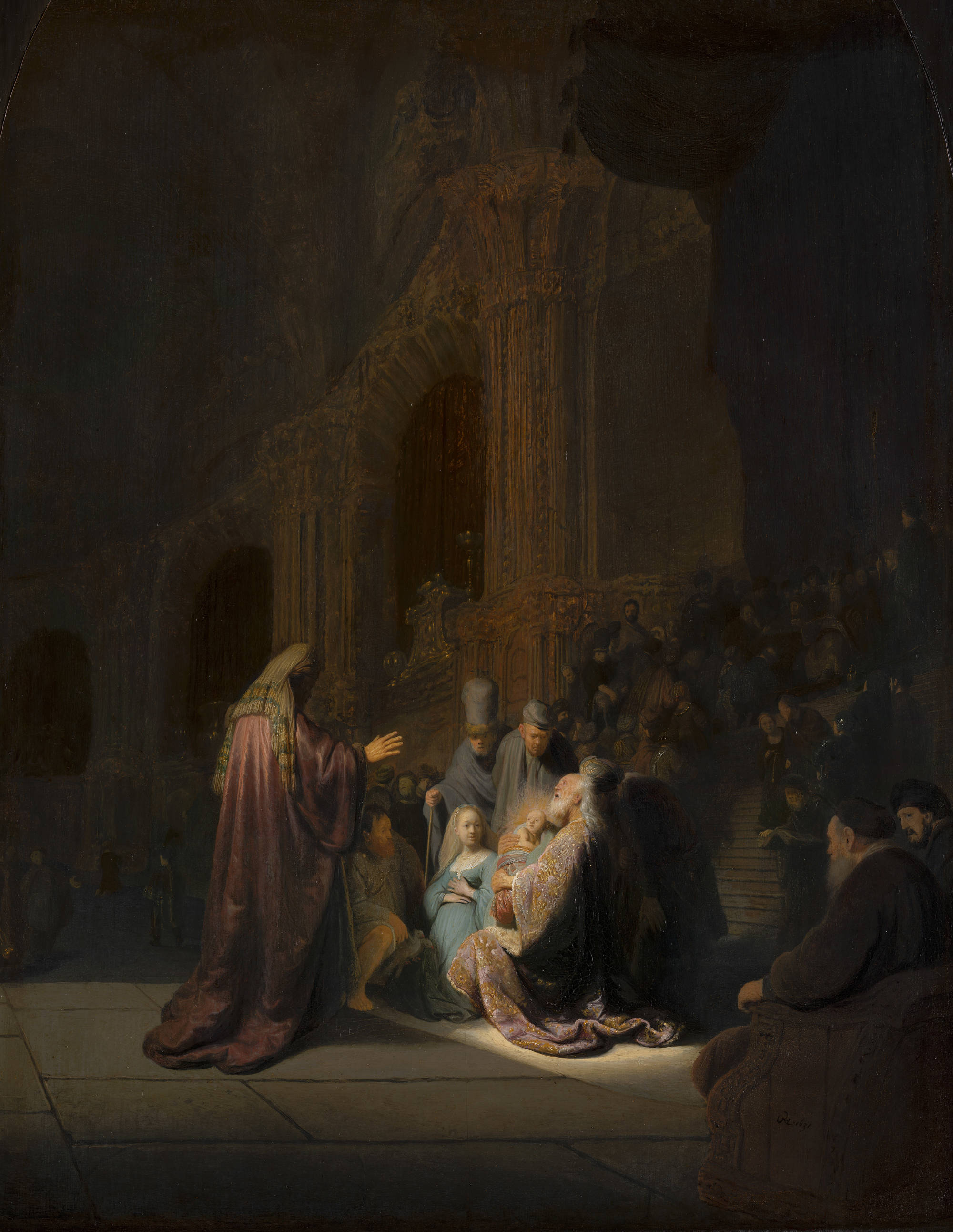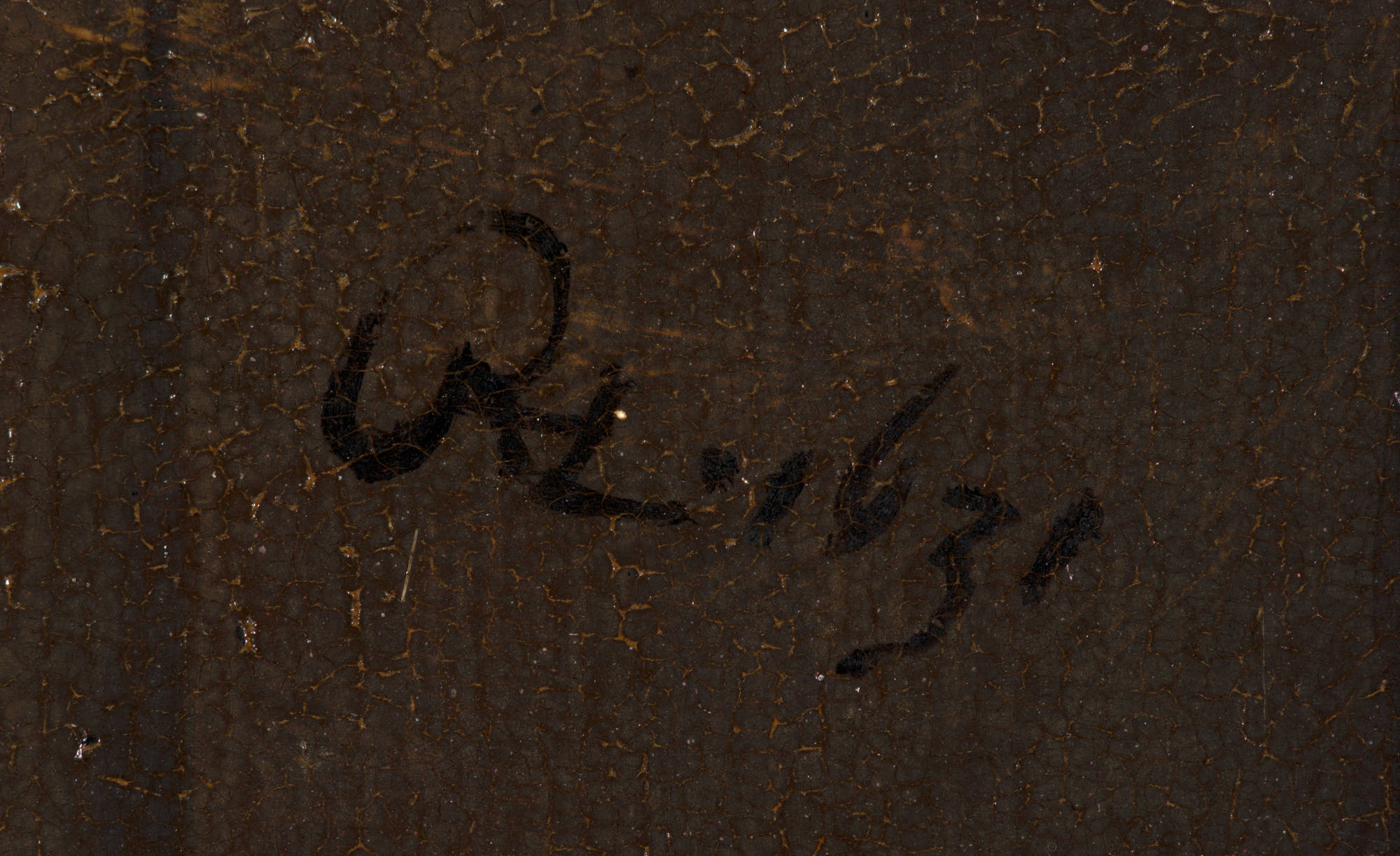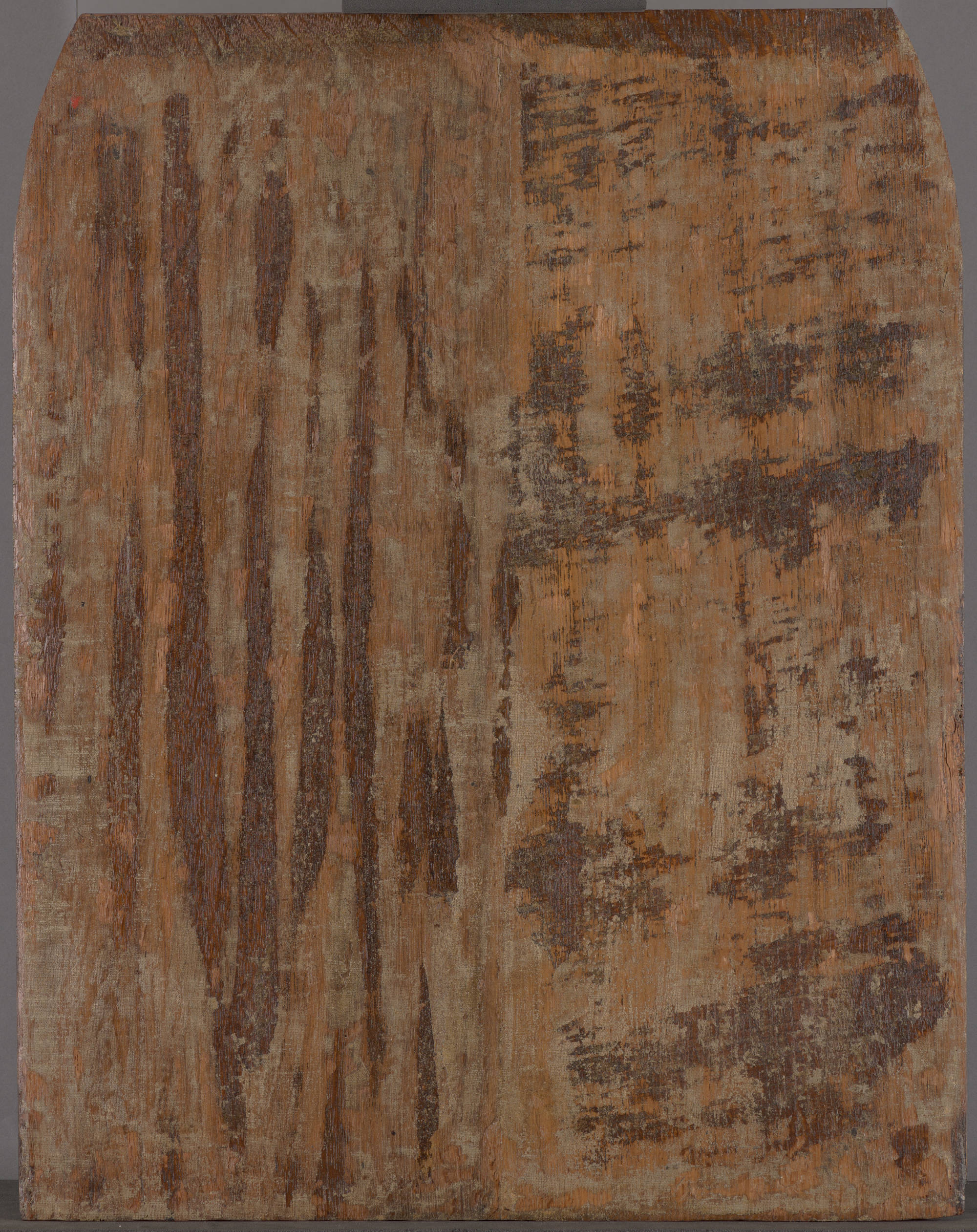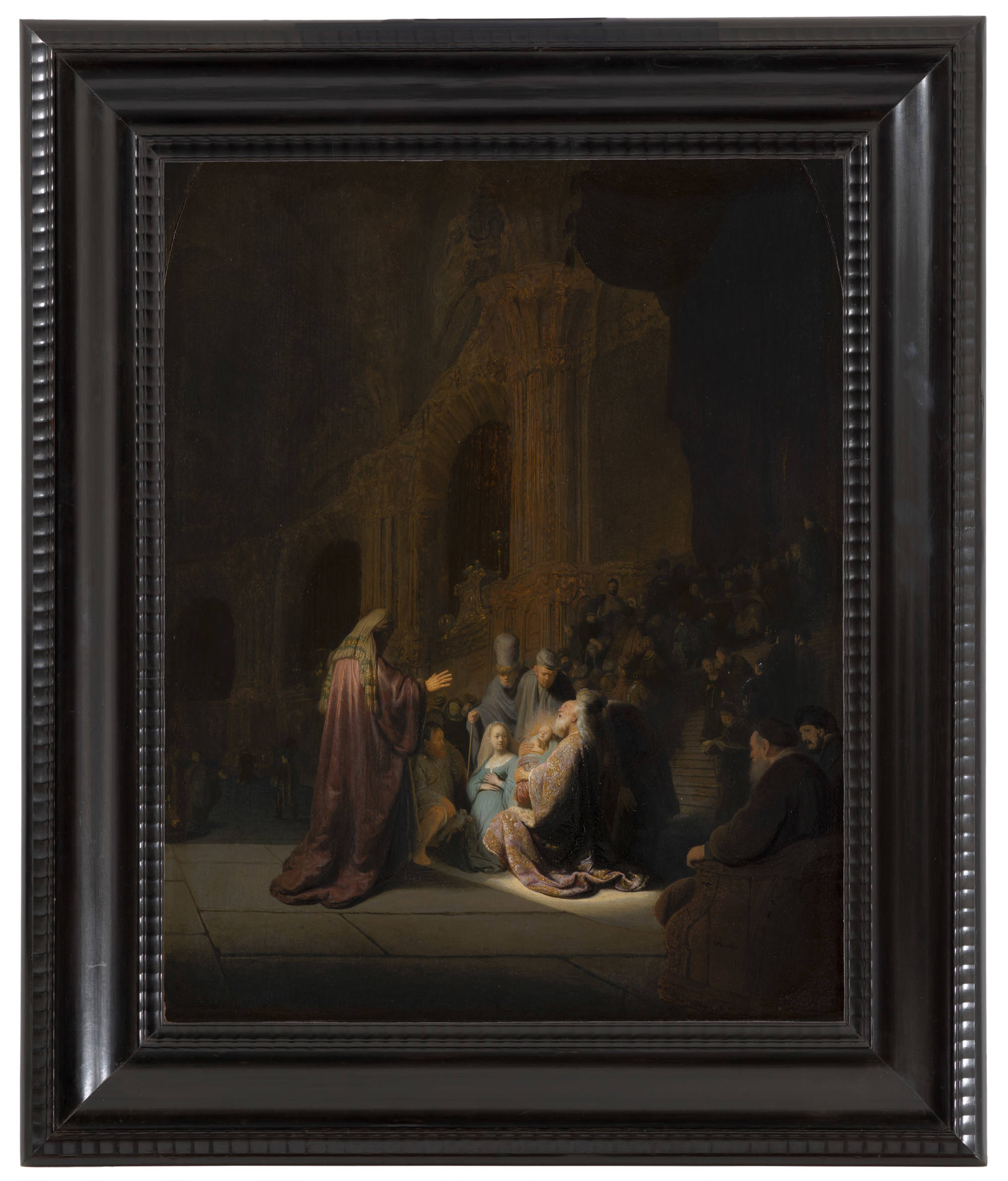Rembrandt had a special fondness for the biblical tale of Simeon’s song of praise. During his long career he incorporated it into paintings, drawings and prints. This scene from 1631 is one of the last paintings he made in Leiden before finally leaving his home city for the dazzling metropolis of Amsterdam.
The story of Simeon is related in the gospel of St Luke. After their child’s circumcision, Mary and Joseph went to the temple in Jerusalem to dedicate their firstborn to the Lord and to make the obligatory sacrifice of two young turtle-doves. ‘And behold, there was a man in Jerusalem, whose name was Simeon; and the same man was just and devout, waiting for the consolation of Israel; and the Holy Ghost was upon him. And it was revealed unto him by the Holy Ghost, that he should not see death, before he had seen the Lord’s Christ. And he came by the Spirit into the temple: and when the parents brought in the child Jesus, to do for him after the custom of the law, Then took he him up in his arms, and blessed God, and said, Lord, now lettest thou thy servant depart in peace, according to thy word: For mine eyes have seen thy salvation, Which thou hast prepared before the face of all people; A light to lighten the Gentiles, and the glory of thy people Israel’ (Luke 2:25 33).
Rembrandt has depicted the most moving scene in the story, when Simeon praises the Lord, realising that the long-awaited moment has come. He lifts up his head in a shaft of light that possibly symbolises divine revelation. To his left kneels Mary, who looks up in surprise at Simeon’s words, and beside her sits Joseph holding the two turtle-doves. Together with the figure standing before them who raises his arms to the heavens, they constitute an insignificant little group in the vast space of the Gothic church, which appears to be based on either the Hoogland or St Peter’s Church in Leiden. The sharp contrast between light and dark areas enhances this effect. It is some time before the viewer notices details in the darker sections such as the worshippers on the steps to the right and the high priest seated beneath a large canopy at the top of the steps.
Prince William IV acquired Simeon’s Song of Praise in 1733. It was first mentioned a little later at Het Loo palace, in the art collection of Anne of Hannover, the prince’s young wife. It hung there as a pendant to Gerrit Dou’s Young Mother, a painting that was about the same size but with rounded top corners. The upper corners were therefore sawn off Rembrandt’s rectangular panel and a rounded segment added and painted. The two paintings flanked an Annunciation to the Shepherds by Cornelis van Poelenburch (Gray, Musée baron Martin), creating an ensemble based on the theme of birth and young life. Rembrandt’s painting was restored to its original size in 1989.
(this text was previously published in: P. van der Ploeg, Q. Buvelot, Royal Picture Gallery Mauritshuis: A princely collection, The Hague 2005, p. 144)










